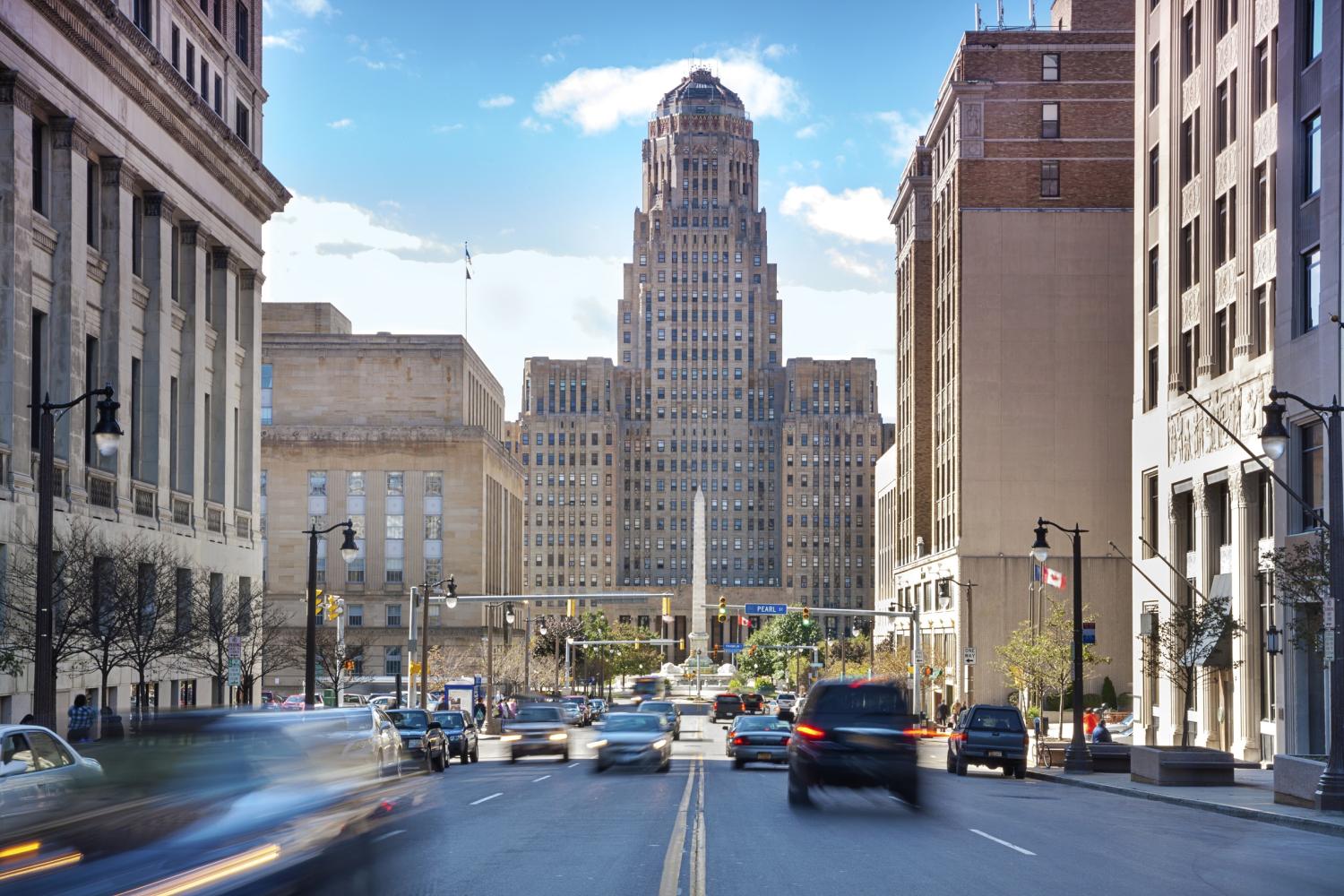The 2010s began with great optimism for urban enthusiasts, with many large U.S. cities displaying high enough growth rates to suggest that it could be “the decade of the city.” But newly released U.S. Census Bureau estimates show that the nation’s large cities experienced uneven growth trajectories over the last decade. In the last several years, many cities registered growth slowdowns and declines while the rest of the country rebounded from the Great Recession and the population dispersed toward suburbs and smaller areas. Some cities grew more rapidly than their surrounding suburbs in the early 2010s, but for many, this is no longer the case.
When the 2020 census results are reported next year, cities’ early-decade growth surge may allow them to register a healthy decade-long growth rate. Yet for most, that growth will have been front-loaded, leaving them stagnating just before the COVID-19 pandemic began.
This analysis focuses on two aspects of city growth. First, it assesses annual changes for the 89 large U.S. cities with populations exceeding 250,000, using the new census estimates for each year between July 2010 and July 2019. Second, the analysis examines city and suburb population growth during this period for major metropolitan areas with populations exceeding 1 million. The final section discusses how the 2010s compare to the previous decade, and speculates on what might be in store for big cities during the post-COVID-19 era.
A surge, then a downturn
Growth in cities—especially those that lie within the biggest metropolitan areas—followed a roller coaster pattern in the last decade. This is in part because their surrounding metropolitan areas followed similar trajectories.

Figure 1 displays the annual growth rates of cities grouped into three size categories: cities with populations exceeding 1 million (10 cities), those with populations between 500,000 and 1 million (27), and cities with populations between 250,000 and 500,000 (52).
All three categories saw noticeably lower growth in the past three years—most pronounced in cities with over 1 million population, which registered absolute losses for both 2017 to 2018 and 2018 to 2019.
A closer look at the 10 cities with populations over 1 million reveals that each registered its highest growth rate in the first five years of the decade, and that growth rate exceeded 1% everywhere except Los Angeles, Chicago and Philadelphia. However, in the most recent year, only two of these cities (Phoenix and San Antonio) showed growth above that level, with three cities (New York, Chicago, and San Jose, Calif.) experiencing negative growth.

There is great variation among cities’ peak growth levels, with Phoenix, Houston, San Antonio, Dallas, San Diego, San Jose, and Los Angeles besting their Frostbelt counterparts New York, Chicago, and Philadelphia. Yet aside from Phoenix, each showed noticeable downward growth trends in the last three years.
There is even greater variation in growth levels among cities in the other two size categories (download Table A). Irvine, Calif. increased its population by at least 2% each of the nine years, topping out at a 4.7% growth rate for 2013 to 2014. In contrast, three of the cities (Detroit, Toledo, Ohio, and Buffalo, N.Y.) registered population losses for nine years of the 2010s.
There was a general tendency for growth levels to decline for most of these cities. Only four (Henderson, Reno, and North Las Vegas in Nevada as well as Fort Wayne, Ind.) saw their decade growth peak in the last year. And of all the 89 cities studied here, just 10 reached their highest growth levels after 2016.
This trend was also evident in the number of cities that registered population losses over the decade (download Table B). In each of the first three years of the decade, no more than seven cities saw their populations decline. However, in the three most recent years, 20 or more cities sustained population declines. In each of these years, New York City led all others in numeric population losses.
The suburbs reemerge
After decades of suburbanization in America, the high levels of big-city growth in the early 2010s led to a unique phenomenon: a growth advantage for cities over their surrounding suburbs. A great deal of attention was given to the “return to the city” for young adults and seniors, along with the attraction of immigrants to urban centers. However, that advantage began to change as the decade wore on.

The shift from city- to suburban-dominant growth is evident in Figure 3, which shows the annual growth rates for primary cities and suburbs for the aggregated populations of the nation’s 53 largest metropolitan areas. (Primary cities can comprise up to three of a metropolitan area’s largest cities.) For each of the decade’s first five years, city growth bested suburban growth. This pattern shifted to a suburban advantage thereafter.
It should be noted that suburban growth also tapered off—a pattern consistent with the broader slowdown in growth for large metropolitan areas. Yet because city stagnation was greater, an advantage in suburban growth reemerged.
City-suburb growth trends take different forms for individual metropolitan areas. In New York, city growth was more than double that of its suburbs from 2010 to 2015. But by the end of the decade, the city was losing population at a higher rate than the suburbs.

In the Dallas metro area, suburbs grew faster than primary cities throughout the decade. That advantage widened as city growth rates diminished in the last two years. In the Charlotte, N.C. metro area, the substantial city-suburb growth disparity narrowed due to both a city slowdown and suburban rise. And in the Washington, D.C. metro area, the primary cities’ early-decade growth advantage diminished as both city and suburban growth fell sharply.
Not all major metropolitan areas witnessed these growth reversals. Nonetheless, from 2010 to 2011, 28 metro areas showed a city growth advantage, falling to just 11 in 2018 to 2019. In the latter year, both primary cities and suburbs registered population declines in four metro areas (download Table C).
The future of city growth
The recent and pervasive growth slowdowns and population losses in large cities occurred for a number of reasons. One of these was the recovering national economy, which prompted a broader dispersal of the population away from larger metropolitan areas as employment opportunities picked up in more modest-sized metro areas, and even outside metropolitan areas. Thus, in many large metro areas, both cities and their surrounding suburbs witnessed growth slowdowns.
A second reason was some recovery of the housing market and lending opportunities, which allowed more young adult millennials to relocate from cities to suburbs and other metropolitan areas after having been drawn to big cities earlier in the decade. In retrospect, some of the “return to the city” movement was spurred by the economic difficulties millennials faced as they came of age during and after the Great Recession and housing bust.
When looked at from a decade-long perspective, the 2020 census will likely show the 2010s to be a period of healthy city growth compared with the 2000s, a somewhat down decade for cities. The Census Bureau’s new estimates show that 55 of the country’s 89 largest cities have already added more people between 2010 and 2019 than was the case in the 2000 to 2010 decade (download Table D). This is the case for each of the 10 cities with populations over 1 million except New York City. Moreover, within the nation’s major metropolitan areas, the city-suburb growth disparity from 2010 to 2019 was modest compared to the sharp disparity during the 2000s.

Of course, this healthy city growth was heavily front-loaded early in the decade, before the declines in recent years. What does this mean for city growth in the early 2020s, especially in the wake of the COVID-19 pandemic?
There are a lot of unknowns, making this difficult to predict. But it is worth noting that big cities registered their highest growth rates during the down economy and deflated housing market in the wake of the Great Recession. Thus, there is a possibility that young adults—both millennials and Gen Z—may again gravitate to big cities as the pandemic recedes and gives way to a recovering economy.
Clearly, there will be a pause in migration as the nation continues to grapple with the pandemic’s near-term impacts. But there are still reasons to believe that cities can rebound in the years ahead.







